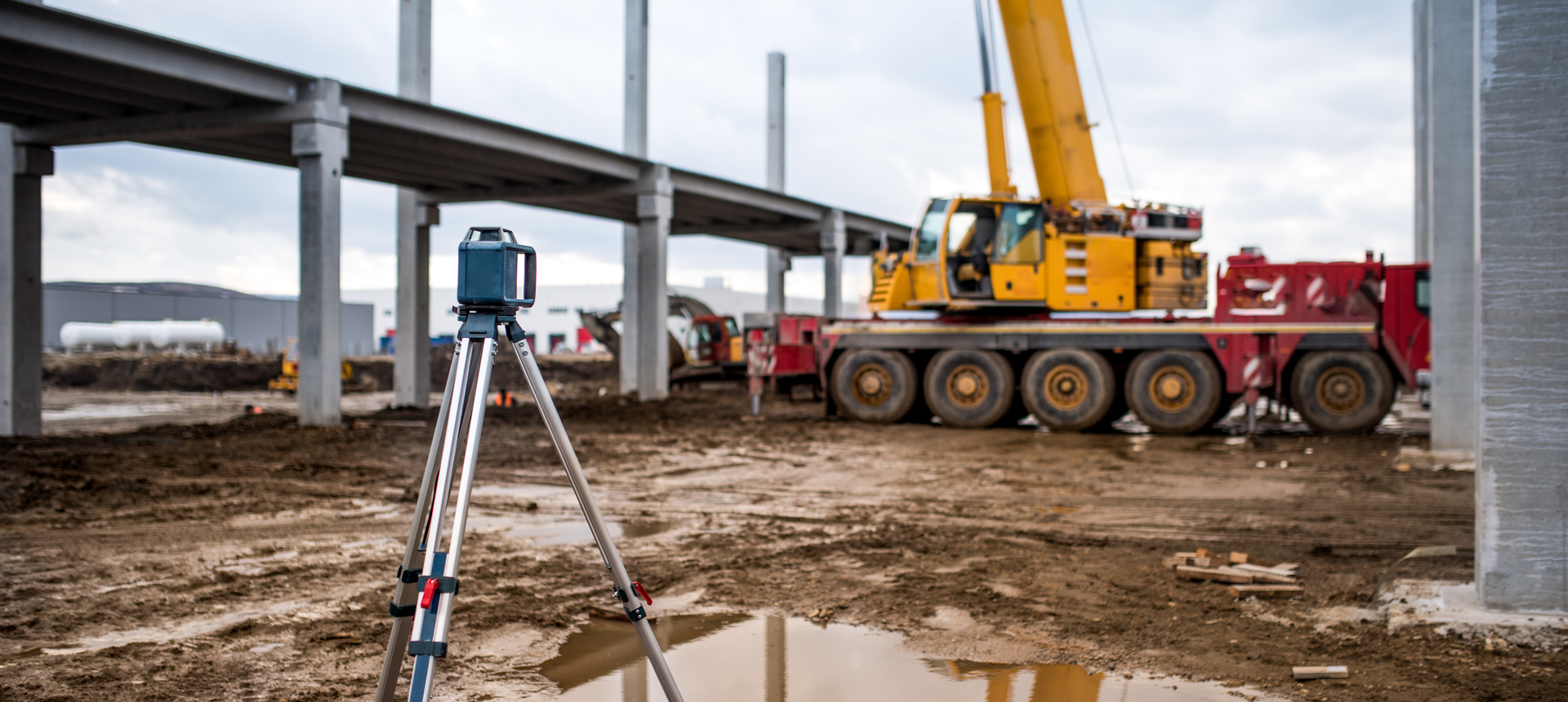Certifications

Article
10.7.24
Key Points
What is Dry and Wet Utility? An In Depth Guide From Leading Utility Engineers
Article
Steve Platt
Understanding the differences between dry and wet utilities is important because it helps us appreciate the planning, design, and maintenance of these essential services.
Today, we often overlook the complex networks that power our daily lives. From the electricity that lights our homes to the water from our taps, these systems are crucial but often unnoticed. They are the backbone of modern infrastructure, ensuring communities run smoothly.
Understanding the differences between dry and wet utilities is important because it helps us appreciate the planning, design, and maintenance of these essential services.
For decades, VIKA has been at the forefront of utility engineering, offering comprehensive solutions tailored to meet the unique needs of each project. Their approach is rooted in a deep understanding of both dry and wet utilities, setting them apart as leaders in this specialized field.
Why You Should Hear It From Us
VIKA's services cover a wide range of utility engineering solutions for both dry and wet utilities. This includes planning, design, and implementation, ensuring smooth integration of utilities into any project. With their expertise, VIKA can handle complex projects of any size.
Key services provided include:
- Feasibility Studies: Assessing the practicality and challenges of utility projects before starting.
- Design and Planning: Creating detailed blueprints and plans for utility installations.
- Permitting and Compliance: Navigating regulations to get necessary approvals.
- Construction Management: Overseeing the installation process to ensure quality and efficiency.
Four Decades of Experience in Utility Infrastructure
With over 40 years of experience, VIKA has established itself as a leader in civil engineering and site design, including extensive work in utility infrastructure. Their long-standing presence in the industry is a testament to their reliability and expertise. Throughout the years, they have successfully completed numerous projects, each time honing their skills and expanding their knowledge base.
Examples of prominent projects include:
- The development of large residential communities with integrated utility systems.
- Upgrading and modernizing urban utility networks to improve performance and sustainability.
- Collaborating with public entities to enhance infrastructure resilience against natural disasters.
Frequent Queries About Dry & Wet Utilities
There tends to be a common misconception among the general public about what separates dry and wet utilities from each other. Dry utilities typically include services like electricity, telecommunications, and gas, which do not involve water. In contrast, wet utilities encompass water-related services such as potable water, sewage, and stormwater management. This distinction helps in grasping the unique challenges and requirements of each type of utility.
The Classification of Gas as a Dry Utility
Dry utility engineering, including gas utilities, is a key strength of VIKA. Dry utilities cover services like electricity, telecommunications, and gas, which don't involve water. Gas utilities are classified as dry because they mainly function in a non-liquid state.
Understanding dry utilities means recognizing their daily roles and challenges. For instance, protecting underground gas pipelines from leaks or damage requires careful planning and advanced monitoring technologies. This involves strategic placement, regular maintenance, and using sensors to detect issues early.
Take aways:
Dry Utility Engineering: A core strength of VIKA.
- Types of Dry Utilities: Includes electricity, telecommunications, and gas.
- Classification of Gas Utilities: Considered dry because they function in a non-liquid state.
Daily Roles and Challenges:
- Protecting Underground Pipelines: Requires careful planning.
- Preventing Leaks or Damage: Uses advanced monitoring technologies.
- Strategic Placement and Maintenance: Essential for safety and efficiency.
- Use of Sophisticated Sensors: Helps in early detection of issues.
The Importance of Wet Utility Management
Wet utility management is equally critical, involving the handling of water-related services such as potable water, sewage, and stormwater management. Effective management ensures the safe and efficient delivery of water services, which is vital for public health and environmental sustainability.
Key aspects of wet utility management include:
- Water Quality: Ensuring that potable water meets health and safety standards.
- Sewage Treatment: Properly treating and disposing of wastewater to prevent contamination.
- Stormwater Management: Implementing systems to manage runoff and prevent flooding.
Why Proper Utility Planning Matters
Proper planning of utility services is crucial for the smooth operation of any community. It ensures that utilities are reliably delivered, minimizing disruptions and improving quality of life. Poor planning can lead to a myriad of issues, including service interruptions, safety hazards, and increased costs.
Some common reasons proper utility planning matters include:
- Efficiency: Well-planned utilities operate more efficiently, saving resources and reducing costs.
- Safety: Proper design minimizes risks associated with utility failures or accidents.
- Future-Proofing: Planning for potential future demands and expansions helps in maintaining long-term utility reliability.
- Environmental Impact: Incorporating sustainable practices in planning reduces the ecological footprint of utility projects.
Sustainability in Utility Systems: VIKA's Commitment to the Future
In a world increasingly focused on sustainability, VIKA is committed to designing utility systems
that are not only efficient but also environmentally responsible. This involves integrating eco- friendly approaches and staying abreast of technological advancements.
Eco-Friendly Approaches to Utility Design
VIKA prioritizes sustainability by incorporating eco-friendly methods into their utility designs. This can include using renewable energy sources, designing systems to minimize waste, and implementing water conservation techniques.
Some of VIKA's eco-friendly initiatives are:
- Green Energy: Utilizing solar, wind, or other renewable sources to power utility systems.
- Water Conservation: Designing systems that reduce water waste through efficient distribution and recycling processes.
- Sustainable Materials: Using materials with lower environmental impact for construction and maintenance.
Leveraging Technology for Efficient Utility Management
Advancements in technology play a pivotal role in modern utility management. VIKA leverages cutting-edge technologies to enhance the efficiency and reliability of utility systems. This includes smart grid technologies, real-time monitoring systems, and advanced data analytics.
Key technological applications in utility management include:
- Smart Grids: Enhancing the reliability and efficiency of electricity distribution networks.
- IoT Sensors: Using Internet of Things (IoT) devices to monitor utility infrastructure in real- time.
- Data Analytics: Analyzing large datasets to predict and mitigate potential issues before they escalate.
The Ever-Changing Landscape of Utility Regulations
Utility regulations are constantly evolving, requiring companies to stay nimble and informed. Compliance with these regulations is crucial for the successful execution and operation of utility projects.
Staying Compliant with Evolving Utility Standards
VIKA's team stays up-to-date with the latest regulations, ensuring compliance across all projects, from Virginia to other regions. This involves regularly reviewing regulatory updates, engaging with industry bodies, and participating in professional development.
Strategies for maintaining compliance include:
- Regular Training: Ensuring all staff are informed about the latest regulations and best practices.
- Regulatory Audits: Conducting internal audits to ensure ongoing compliance with relevant standards.
- Industry Engagement: Participating in industry forums and committees to stay on the cutting edge of regulatory changes.
Contributing to Industry Advancements in Utility Engineering
VIKA's insights and news showcase contributions to advancing utility engineering practices. By sharing their knowledge and innovations, they help to push the boundaries of what is possible in the field of utility engineering.
Key contributions to industry advancements include:
- Developing new methodologies for efficient utility design and implementation.
- Collaborating on research projects that explore innovative approaches to utility management.
- Sharing case studies and project successes to educate and inspire peers in the industry.
VIKA's comprehensive approach to utility engineering empowers communities by providing reliable and efficient infrastructure solutions. Their commitment to excellence ensures that every project not only meets but exceeds expectations, contributing to the overall well-being and sustainability of the communities they serve.
By continuously improving their services and staying at the forefront of technological and regulatory developments, they remain a trusted partner in the development and maintenance of modern infrastructure. Through expertise, dedication, and innovative spirit, they help power the daily lives of countless individuals and businesses.
See Related Articles:
https://www.vika.com/dry-utility-engineering-company/dry-utility-consultant
https://www.vika.com/dry-utility-engineering-company

Let’s Work Together!
What are you working on? Please let us know how we can help you meet your project goals.
Contact Us

